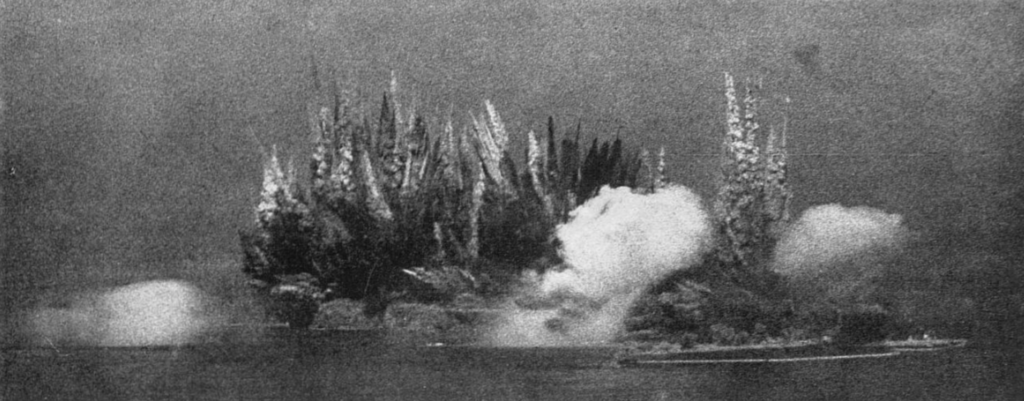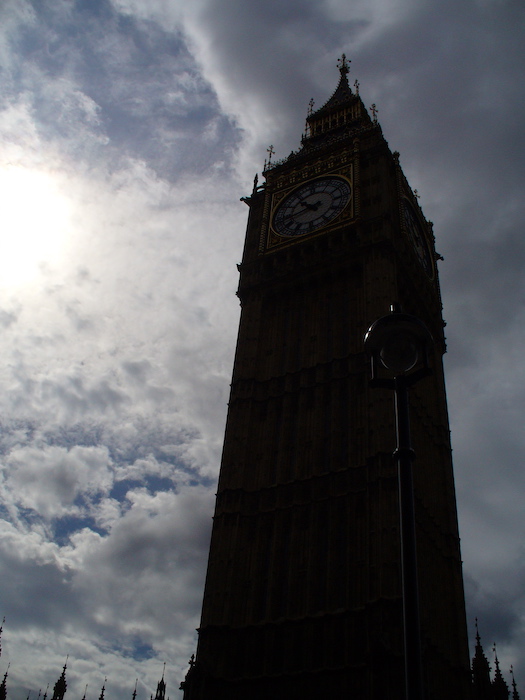
There have been many big bangs. One particularly important one is the ‘Big Bang’ in which the Universe began, according to current cosmological understanding, approximately 13.8 billion years ago. This was not a bang at all, in the sense of an explosion, because there was nothing to explode into — rather it was space itself which was expanding, as it has continued to do for 13.8 billion years. Why, then, do we use this evocative but misleading name for what is arguably the most important event to have ever taken place? It was famously coined by cosmologist Fred Hoyle in a BBC Third Programme broadcast on 28 March 1949 to describe the expanding universe concept, then the main competing theory to one he helped develop, the (now-discredited) steady-state (or continuous creation) theory (emphasis added):
We now come to the question of applying the observational tests to earlier theories. These theories were based on the hypothesis that all the matter in the universe was created in one big bang at a particular time in the remote past. It now turns out that in some respect or other all such theories are in conflict with the observational requirements.1
The term ‘big bang’ stuck — or it least it did from the 1970s — and it now stands for the entire cosmological theory of which it is just one part.2
But why did Hoyle choose that particular phrase, ‘big bang’? On one level it is simply catchy, evocative and onomatopoeic. Hoyle himself said later that ‘I was constantly striving over the radio — where I had no visual aids, nothing except the spoken word — for visual images […] And that seemed to be one way of distinguishing between the steady-state and the explosive big bang’.3
Reading Jan Rüger’s excellent history of Heligoland, a tiny island in the North Sea (population now 1300, about 1.7 km2 in area; British-controlled 1807-1890, 1945-1952; German-controlled 1890-1945, 1952 to present), I wondered if ‘big bang’ came from the Royal Navy’s Operation Big Bang. This aimed to prevent Heligoland from ever being fortified by Germany again (as it had been before 1914 — in 1913 it was feared as an advanced Zeppelin base — and again before 1939) by the simple expedient of blowing it to pieces (see above).4 Simple? Equivalent to 3.2 kilotons of TNT, Big Bang was one of the biggest non-natural, non-nuclear explosions ever (apparently it’s in the Guinness Book of World Records as the biggest). But that was in April 1947, nearly two years before Hoyle’s broadcast, which seems like rather too long to stick around in his head as inspiration.
Helge Kragh (also the author of an excellent history, of modern cosmology) notes, though, that the term ‘big bang’ had been actually been used in the title of a scientific paper published in 1949, the same year as Hoyle’s talk, on ‘the meteorological effects of a large TNT explosion’.5 And the title of that paper? ‘Upper-atmosphere temperatures from Helgoland [sic] big bang’.6 Incidentally, not only was war the reason for the explosion but it was also the reason for the experiment: the authors all worked at the US Naval Ordnance Laboratory (with one moving to the Sandia branch of Los Alamos) and were on an Office of Naval Research expedition. (Though it is not stated, the question of listening to — or more preceisely, out for — large explosions was no doubt a growing motivation.) The monitoring sites were scattered across occupied Germany, constrained ‘in a very real manner’ by the ‘boundaries of Zones of Occupation, and personal requirements for housing and food for the observers in a badly wrecked country’.7
Kragh doesn’t go so far as to claim that the ‘Helgoland big bang’ paper inspired Hoyle, probably because while it was received by the journal in January 1949, a couple of months before the BBC broadcast, it wasn’t actually published until October. And, being an astrophysicist, Hoyle probably wasn’t a regular reader of the Journal of Meteorology. Then again, preprints were a thing; and anyway meteorology is basically physics, and Hoyle was in fact at exactly that time dabbling in ‘climatic variation’, of all things.8 So maybe the Heligoland big bang was the origin point for the Big Bang.
However, there’s a slightly longer history here (isn’t there always?) which I’ll look at in another post.
Image source: Sphere (London), 26 April 1947, 99.
![]() This work is licensed under a Creative Commons Attribution-NonCommercial-NoDerivatives 4.0 International License.
Permissions beyond the scope of this license may be available at http://airminded.org/copyright/.
This work is licensed under a Creative Commons Attribution-NonCommercial-NoDerivatives 4.0 International License.
Permissions beyond the scope of this license may be available at http://airminded.org/copyright/.
- Fred Hoyle, script, March 1949; in Fred Hoyle: An Online Exhibition. Apparently reprinted in Listener, 7 April 1949, but I haven’t seen this. [↩]
- Helge Kragh, ‘Big Bang: the etymology of a name’, Astronomy & Geophysics 54, no. 2 (2013): 2.28-2.30. [↩]
- Quoted in ibid., 2.29. Kragh argues, I think persuasively, that Hoyle did not intend ‘big bang’ to be derisive, as is often said. [↩]
- Jan Rüger, Heligoland: Britain, Germany, and the Struggle for the North Sea (Oxford: Oxford University Press, 2017), 204-207. [↩]
- Helge Kragh, Cosmology and Controversy: The Historical Development of Two Theories of the the Universe (Princeton: Princeton University Press, 1994); Kragh, ‘Big Bang’, 2.30. [↩]
- E. F. Cox et al., ‘Upper-atmosphere temperatures from Helgoland big bang’, Journal of the Atmospheric Sciences 6, no. 5 (1949): 300–311. [↩]
- Ibid., 303. [↩]
- F. Hoyle, ‘External sources of climatic variation’, Quarterly Journal of the Royal Meteorological Society 75, no. 324 (1949): 161–163. [↩]





Hey, Brett:
It seems to me that as of 1949, the steady state/Big Bang controversy also has a post-war connection with bombing and airmindedness, in that they are theories of nucleosynthesis as well as of cosmogony, and in 1949 the United States is committed to building a hydrogen bomb without a theoretical mechanism for sticking those hydrogen atoms together. (As it turns out it’s a lot more than just protons sticking together.) Both the Big Bang and the steady state have something to say about how that happens in nature.
Yes, great point, Erik. That the interest in these big bangs were converging at this time was not a coincidence. And of course there was significant cross-fertilisation between the creative and destructive ends, as it were, of nuclear physics at this time, in people, institutions and ideas.